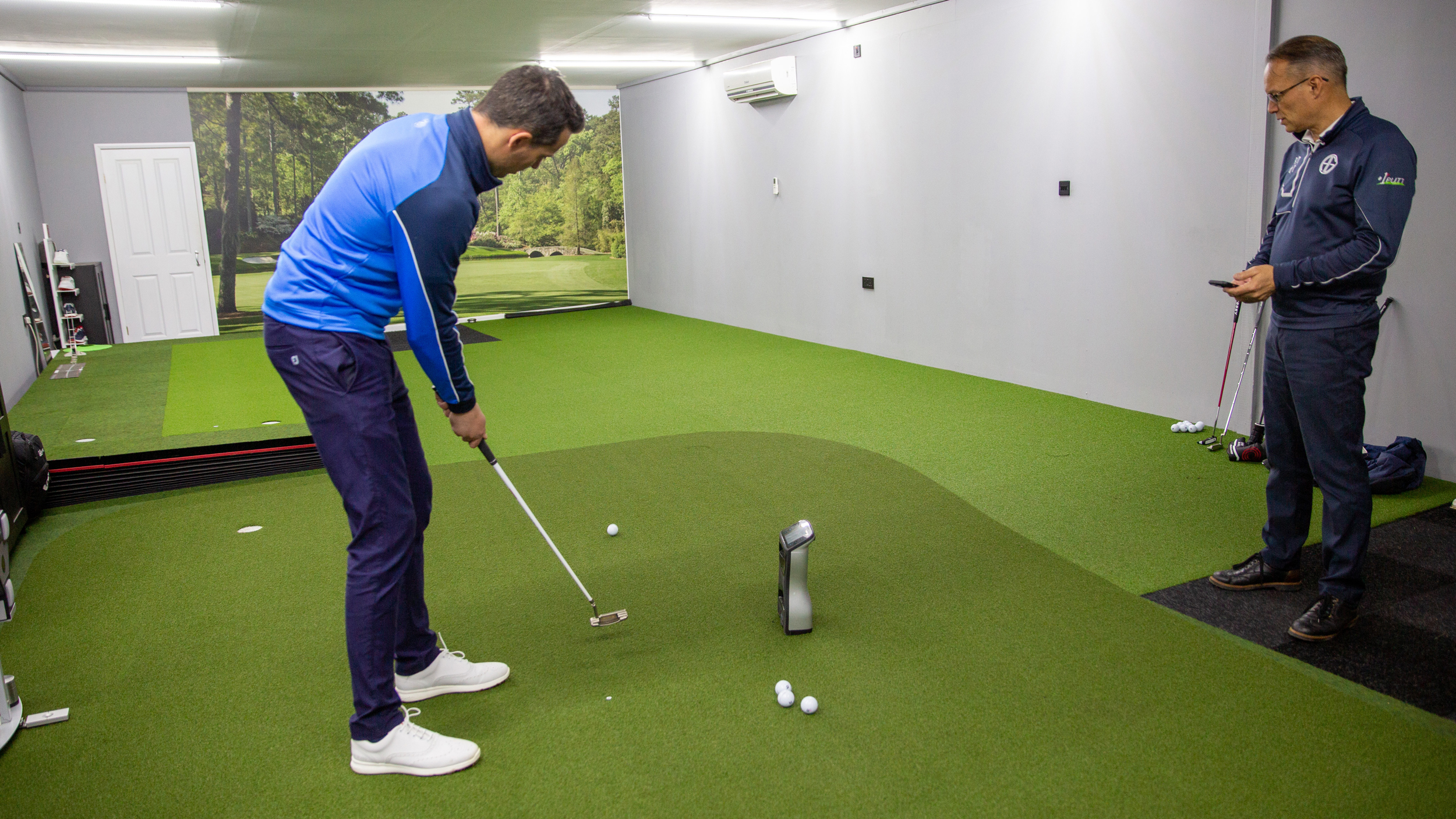How Much Difference Does The Putter Shaft Make?
Joel Tadman attempts to find out the impact the shaft has on putter performance during a fitting with short game expert Andy Gorman

The majority of golfers are acutely aware of the importance of having the right shaft in their drivers and irons, be it the correct weight and flex but also the material used, be it graphite or steel. But the focus on the shaft often doesn’t transfer to the shorter clubs in the bag and especially the putter. With the flat stick, the shaft is often viewed as simply the tube that connects the grip to the head but in fact, the putter shaft has an integral part to play when it comes to performance on the greens.
WATCH: How much difference does the putter shaft make?
We know getting the right length of putter shaft is important for posture and eye position, but golfers should also start to think about the material used and construction of the shaft in their putter. To find out why, we took a trip to Wishaw Golf Club to meet up with short game specialist Andy Gorman, who has been custom fitting putters for decades and also conducted various research projects to analyse putter performance and the impact different design elements have on it.
“Manufacturers have tended to overlook the importance of the putter shaft,” says Gorman. “We’ve now got the technology to test everything in so much more detail and we can make also shafts out of different materials and combinations that affects the performance and feel in different ways. Specifically the stability of the strike. We all mishit putts and if we’re missing the sweetspot that’s going to cause twist around the shaft. Toe strikes will open the club face and heel strikes will close it and this has a knock on effect on the energy that is transferred to the ball and the resulting distance it travels. It also affects the dispersion left and right, the more twisting there is the wider the putts will finish relative to the hole.”
There are a surprising number of options available when it comes to the putter shaft. Besides the traditional steel shaft, golfers can also opt for a multi-material shaft that typically combines a longer graphite section which a shorter steel section at the bottom. We’re also seeing the emergence of full graphite shafts, and so we decided to put them all to the test on Foresight Sports’ Putting Analysis platform using the GCQuad launch monitor to understand the subtle differences in performance. On a 35-foot putt, we hit three shots out of the middle, three from severely in the toe and three from the heel using heads of a similar size and style in a steel shaft, an all graphite shaft and a multi-material shaft before analysing the data.
Traditional Steel Shaft
Starting with a more traditional stepped steel shaft, this performed well on centred hits but when the strike pattern moved to the heel and toe, the ball speed dropped off significantly and dispersion also widened too. From short range it felt perfectly playable but on longer putts the kicking or flex in the shaft at impact became more noticeable.
“As humans we react to what we see and when you saw you were losing energy on the toe strikes you started to put more speed into the clubhead to compensate,” Gorman explained.
“But what you get from this shaft on longer putts is the lag factor. When the shaft is not as stable, it’s either in load or release or somewhere in-between, which can cause inconsistencies in the way the clubhead is delivered in terms of speed but also the face angle.”

The KBS GPS putter shaft weighs 120 grams, closely matching that of a steel putter shaft, and goes up to a 38-inch option to fit every body type and posture. It is also available in eight colors through the KBS Custom Plus + department.
All Graphite Shaft
We then moved on to an all graphite shaft - this model in particular had a similar weight to the steel shaft at 120g but has been designed to play much stiffer. The feel of this shaft is quite boardy and takes some getting used to, but there was noticeable less deflection and ‘give’ at the point of collision, especially on the longer putts, and that feeling of stability increased our confidence levels.
“The launch dynamics in terms of efficiency and smash factor were much more consistent,” said Gorman. “There wasn’t a big drop off in speed when you hit putts from the heel and toe and the left-to-right dispersion was much tighter. In fact, you holed the first putt you hit from all three strike locations on test, which certainly showed the performance was much more uniform overall.’

Designed as a low torque performance shaft which results in minimising deflection bend commonly found in traditional steel putter shafts on longer putts, the KBS GPS incorporates a premium crafted composite materials and fibres to ensure stability, durability, and accuracy.
Multi Material Shaft
The final option was the multi-material shaft, an option offered by many brands including Odyssey, PXG and Cleveland. Of course, performance will vary depending on the brand but typically these shafts will be lighter overall, altering the feel for golfers trying them for the first time. Specifically, the putter will typically feel more head heavy and it can take time to adjust to how the head flows during the stroke.
“A lighter overall feel from the multi-compound shaft made it difficult to get the requisite speed into the putter head,” Gorman observed. “As a result putts finished shorter more often. Putts from the sweetspot came off faster but shots from the heel or toe really dropped off in terms of speed and accuracy.”
One advantage of a multi-material composition in a shaft like this, with the steel section at the bottom where the shaft enters the head, is that you get the weight saving benefit of graphite with the fitting benefits of steel. Meaning you're able to incorporate single or double bend hosel options to change the balance of the putter and cater for more stroke types and visual preferences.
Conclusion
So how much difference does the putter shaft make? It turns out quite a lot, especially from long range where the effect of putter face deflection is magnified. Performance will vary by brand and by player, but this test showed the all-graphite shaft offered the greatest amount of stability and resistance to twisting when putts were stuck off-centre, which lead to a tighter dispersion. With golfers often three putting from this distance, this type of gain in performance could well knock shots of your scores and so an upgrade in putter shaft is well worth considering when you make your next putter purchase.
Subscribe to the Golf Monthly newsletter to stay up to date with all the latest tour news, equipment news, reviews, head-to-heads and buyer’s guides from our team of experienced experts.
Articles created in partnership with KBS.
-
 The Best Men's Golfers Over 40: The Players Defying The Aging Process To Remain Competitive
The Best Men's Golfers Over 40: The Players Defying The Aging Process To Remain CompetitiveMany golfers over 40 are still performing at a hugely impressive level - here are some of the best
-
 Diary Of A Secret Club Golfer: We Must Open Up Our Doors To Save Club Golf
Diary Of A Secret Club Golfer: We Must Open Up Our Doors To Save Club GolfThe Secret Club Golfer believes more venues must open their clubhouses to the public in order to survive